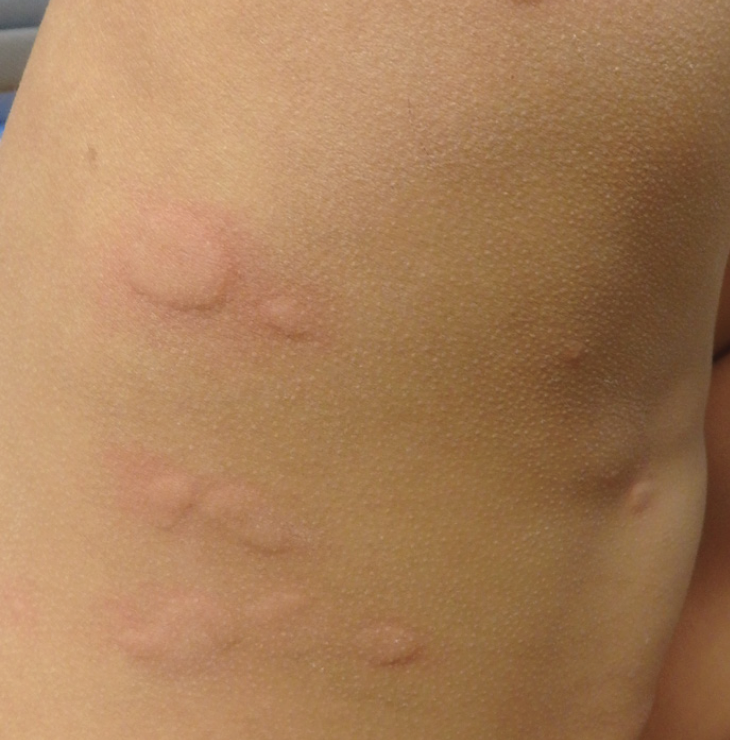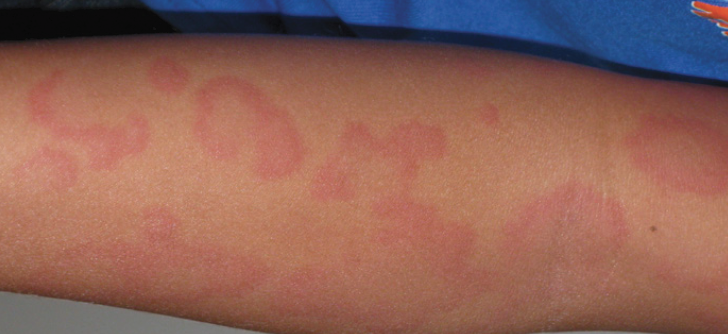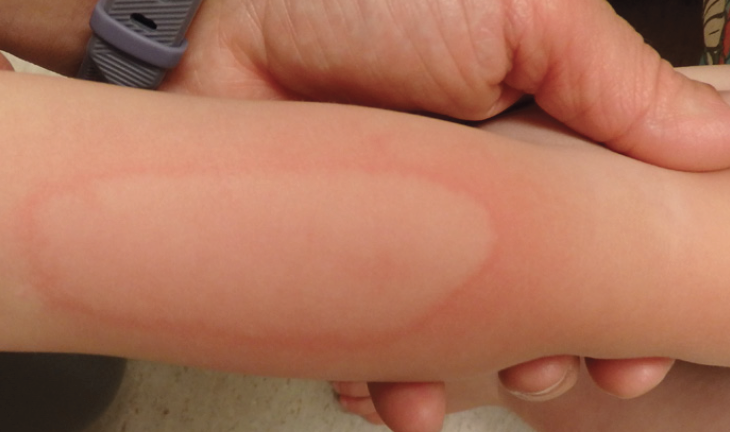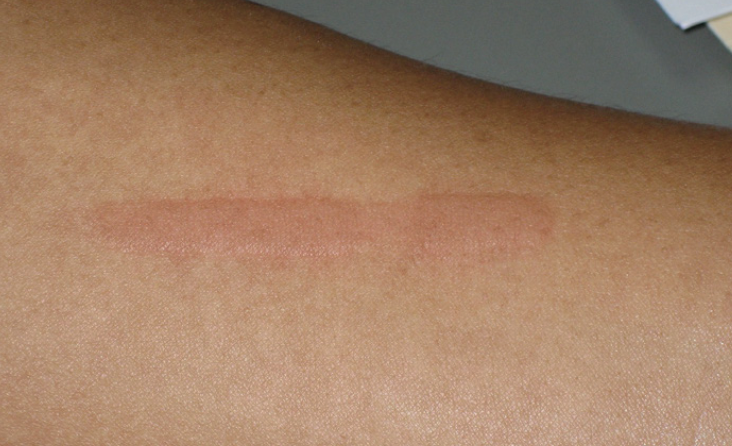Chapter 10: Inflammatory Skin Conditions
Urticaria (Hives)
What is it?
Urticaria (hives) is a vascular reaction that is caused by the release of histamine from mast cells. The histamine results in raised, red lesion with significant edema, usually causing significant pruritus. Most lesions resolve within 12 hours but new ones continue to appear. Urticaria is classified as acute if it lasts less than 6 weeks and chronic if it lasts more than 6 weeks after it is initially triggered.
What causes it?
The most common causes of acute urticaria are drugs (especially antibiotics), and infections (especially streptococcal and viral respiratory illnesses). Foods (especially eggs, milk, shellfish, nuts, and chocolate) may also be a trigger but only account for ~1% of acute urticaria. In the majority of cases of chronic urticaria, no trigger is identified, but a careful history and physical exam should look for signs of thyroid disease, connective tissue disease, infection, and chronic drug or food exposure.
What does it look like?
The classic lesion of urticaria is wheals: itchy, edematous, skin-coloured to pink lesions with a rim of pallor which come and go within 24 hours. Their size and distribution is variable. In children they may be annular and may have slightly dusky center. Wheals may be accompanied by angioedema, which is deeper swelling that typically affects the lips, tongue and skin around the eyes. This tends to be painful or tender as opposed to itchy and lasts 24-48 hours.
How is it treated?
The first step is trigger identification (if possible) and avoidance. In some cases this may be sufficient, but treatment with antihistamines is often required. For chronic urticaria, these are best taken daily for several weeks.
Physical urticarias (also known as inducible urticarias) are a distinct subgroup of chronic urticaria caused by an external stimulus. These are much less common than idiopathic or spontaneous chronic urticaria, and can usually be screened for on history and physical quite easily:
Dermatographism is a type of urticaria in which wheals appear after scratching or rubbing of the skin.
In delayed pressure urticaria, wheals appear 30 mins-12 hours after there is pressure on the skin such as from tight socks, shoes or waistbands.
Cholinergic urticaria is a condition in which wheals appear within 15 minutes of a sweat-inducing episode such as exercise, hot bath, or stress. It is usually seen on the upper trunk.
With cold urticaria, wheals appear after exposure to cold and can be eluted with the ice cube test. People with cold urticaria should be counseled not to jump into cold water.
Solar urticaria is rare and occurs within minutes of exposure to the sun (sometimes even through clothes). Headache and fainting may occur if the reaction is severe enough.
Aquagenic urticaria occurs after exposure to water of any temperature.





